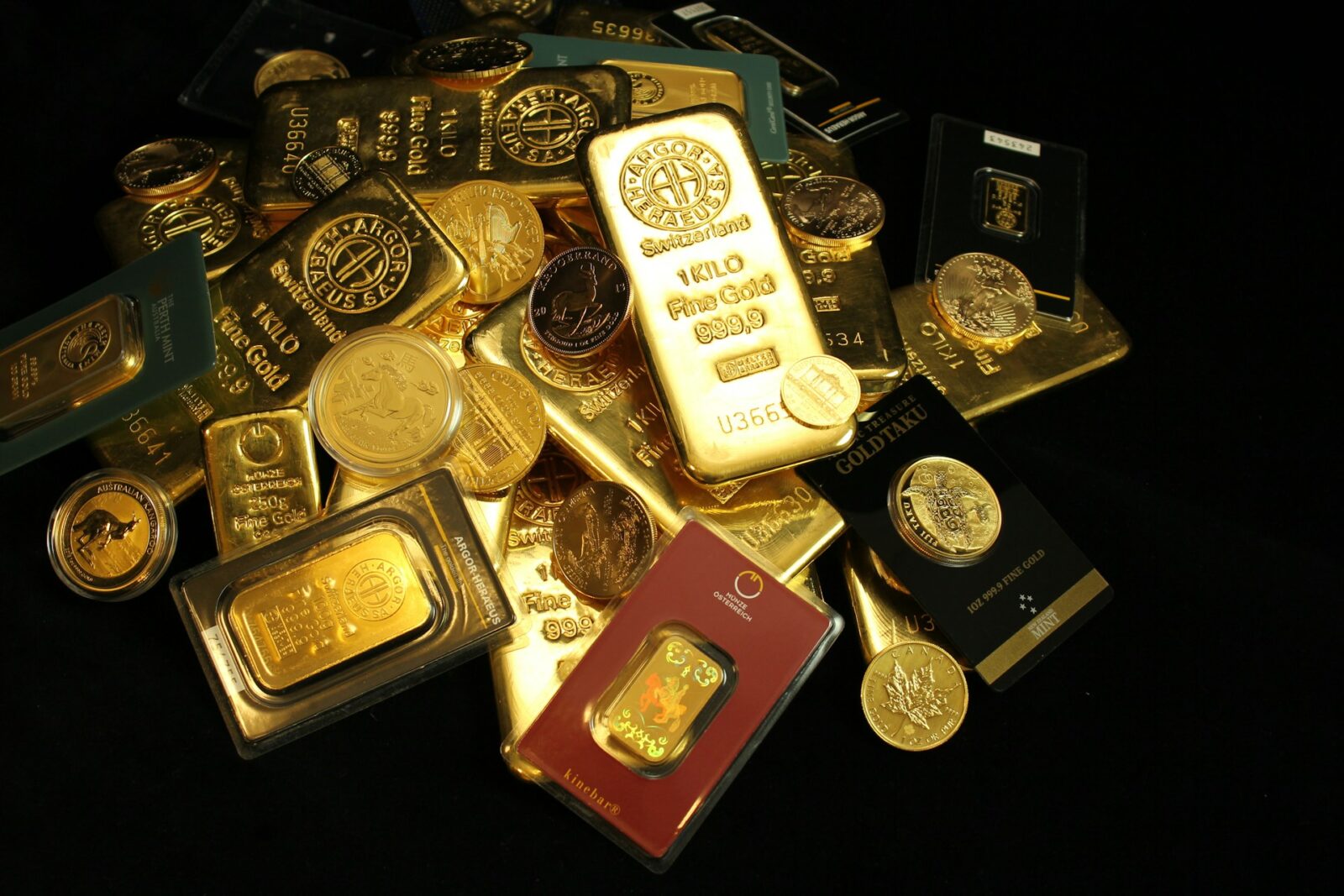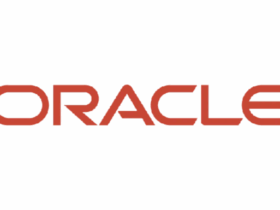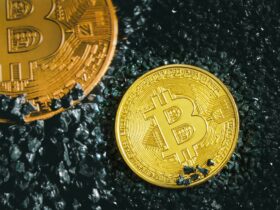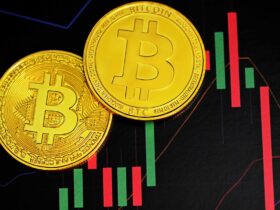A Digital Rush for the New Age of Gold
In a year marked by record-breaking gold prices and growing skepticism over fiat currencies, a new frontier of investing is taking shape — tokenized gold.
As investors brace for continued dollar debasement and seek refuge in real assets, the combination of precious metals and blockchain technology is creating a modern gold rush. The concept is simple yet revolutionary: instead of holding physical bars or ETFs, investors can now own digital tokens fully backed by real gold, stored securely in vaults around the world.
This emerging market is gaining traction fast. Tether’s gold-backed token (XAUT), for instance, saw its market cap soar nearly 60% in a single quarter, climbing from $1.44 billion to $2.1 billion as gold hit new highs in October. Other players, including PAX Gold (PAXG) and WisdomTree’s Digital Gold ETP, have also seen inflows rise sharply.
“It’s really an alternative way that people can hold gold if they prefer to hold it in a digital wallet,” said Will Peck, Head of Digital Assets at WisdomTree. “They can trade it 24/7, around the clock, with peer-to-peer transferability.”
The convergence of traditional safe-haven demand and blockchain innovation is giving rise to a new asset class — one that blends the age-old stability of gold with the efficiency, accessibility, and liquidity of decentralized finance.
Why Tokenized Gold Is Gaining Momentum
The surge in tokenized gold investment in 2025 is driven by a mix of macroeconomic anxiety, technological innovation, and financial pragmatism.
1. The Debasement Trade, Digitized
With government debt at record highs and central banks flooding markets with liquidity, investors are increasingly turning to assets that protect purchasing power. Gold — the traditional hedge — remains at the center of this strategy. But tokenized gold offers a digital twist.
“You have a continued debasement of US dollars,” said Ian Kane, CEO of fintech firm Firepan. “Being able to take gold, take a loan against it, and generate yield — all while protecting my principal from devaluation — that becomes really compelling.”
Unlike traditional gold holdings, tokenized versions can be easily integrated into decentralized finance (DeFi) platforms, allowing investors to use their gold as collateral for loans or yield-generating instruments — something that wasn’t possible before.
2. 24/7 Liquidity and Global Accessibility
Physical gold markets are notoriously slow-moving and regional. Tokenized gold, however, trades like cryptocurrencies — instant, global, and round-the-clock. This makes it particularly appealing to a younger, digitally native investor class that values accessibility and autonomy.
“Tokenization makes gold more than just a passive store of value,” said Peck. “It becomes a programmable, transferable digital asset.”
3. Blockchain Transparency and Custody Confidence
Each tokenized gold product represents a specific quantity of physical bullion, typically one troy ounce per token, and is fully redeemable for the underlying metal. Most issuers partner with regulated vaults in Zurich, London, or Singapore, providing verifiable proof of reserves — a level of transparency rare in traditional gold markets.
In a post-FTX world, that credibility matters. Blockchain auditability ensures investors know exactly where their assets are stored, bridging the trust gap that has historically plagued both crypto and commodities markets.
Tether and PAX Lead the Tokenized Gold Race
Although still a small niche within the broader digital asset ecosystem, tokenized gold is growing rapidly.
The combined market capitalization of gold-backed tokens now exceeds $3 billion, a fraction of the $300 billion stablecoin market — but that share is expanding fast.
According to blockchain analytics firm Kaiko, Tether Gold (XAUT) and PAX Gold (PAXG) account for more than 90% of all tokenized bullion in circulation.
- Tether Gold (XAUT): Backed by gold held in Swiss vaults, XAUT allows redemption for physical gold in bars. Its market cap surged 60% between July and October 2025.
- PAX Gold (PAXG): Issued by Paxos Trust, each token represents one fine troy ounce of gold stored in London vaults. PAXG is regulated by the New York Department of Financial Services (NYDFS).
These tokens are traded globally on major crypto exchanges like Binance, Bitfinex, and Coinbase, offering real-time exposure to gold without the logistical hurdles of physical storage or the custodial fees of ETFs.
The New Role of Gold in the Tokenization Era
While Bitcoin and Ethereum have dominated the headlines of digital asset investing, tokenized gold represents a different philosophical and economic approach — one grounded in tangible value rather than purely speculative demand.
Complementary, Not Competitive
Experts increasingly see gold and Bitcoin as complementary hedging tools. Both are deflationary assets with capped supplies, designed to resist monetary dilution.
“Both gold and bitcoin have done well in a world of rampant money printing,” Peck said. “They serve different but complementary roles as structurally deflationary assets.”
In fact, many institutional investors now include tokenized gold and digital currencies side-by-side in their inflation-hedging portfolios — a strategy that blends the historical reliability of gold with the exponential potential of crypto.
Collateral, Not Just a Commodity
Beyond trading, tokenized gold is increasingly used as collateral in decentralized lending markets, allowing holders to borrow stablecoins or fiat currencies against their holdings. This integration into the DeFi economy turns gold into a productive financial instrument, unlocking liquidity without requiring liquidation.
Platforms like Aave, Maple Finance, and Centrifuge have already begun exploring tokenized real-world asset (RWA) pools, where gold-backed tokens can serve as low-volatility collateral.
Regulation and the Rise of Tokenization
The rapid expansion of tokenized assets has not gone unnoticed by policymakers. In the United States, the passage of the GENIUS Act earlier this year created regulatory clarity for stablecoins and tokenized assets, paving the way for mainstream adoption.
The Act establishes reserve, redemption, and reporting standards for digital assets tied to real-world value, setting the foundation for a broader tokenized economy.
“We expect with the GENIUS Act and more activity in the space, gold and other assets are going to grow quickly going forward,” said Peck.
The legislation has already inspired a surge in tokenization projects spanning not just gold, but stocks, real estate, mutual funds, and commodities — all of which could soon exist as digitally transferable, blockchain-native instruments.
Industry leaders from BlackRock (BLK) to Robinhood (HOOD) have publicly endorsed the trend. Robinhood CEO Vlad Tenev recently called tokenization a “freight train that can’t be stopped,” while BlackRock’s Larry Fink said it would “revolutionize investing.”
Outlook: The Future of Tokenized Gold Investment in 2025 and Beyond
With gold prices near record highs and blockchain technology maturing, tokenized gold investment is poised for exponential growth.
Analysts project that the tokenized gold market could expand from $3 billion today to over $25 billion by 2030, as institutional demand for digital assets accelerates and more regulated issuers enter the space.
The next stage, experts say, will be integration into traditional finance — from brokerage platforms to global commodity exchanges — where digital gold tokens could serve as standardized settlement instruments.
Meanwhile, as nations around the world flirt with central bank digital currencies (CBDCs), tokenized gold could play a role in bridging fiat and digital economies, acting as a neutral, universally trusted collateral layer in global finance.
Gold’s Old Allure, Reimagined for the Blockchain Age
The rise of tokenized gold investment in 2025 shows that even the world’s oldest store of value can evolve for the digital era.
For investors, it offers the best of both worlds — the timeless security of physical bullion and the borderless convenience of blockchain technology. Whether used as a hedge against inflation, a collateral asset, or a decentralized reserve, tokenized gold is rapidly transforming from a niche innovation into a mainstream pillar of the new financial system.
As markets grapple with inflation, currency risk, and shifting global power dynamics, one thing seems certain: the future of gold may no longer be held in vaults — but in wallets.






